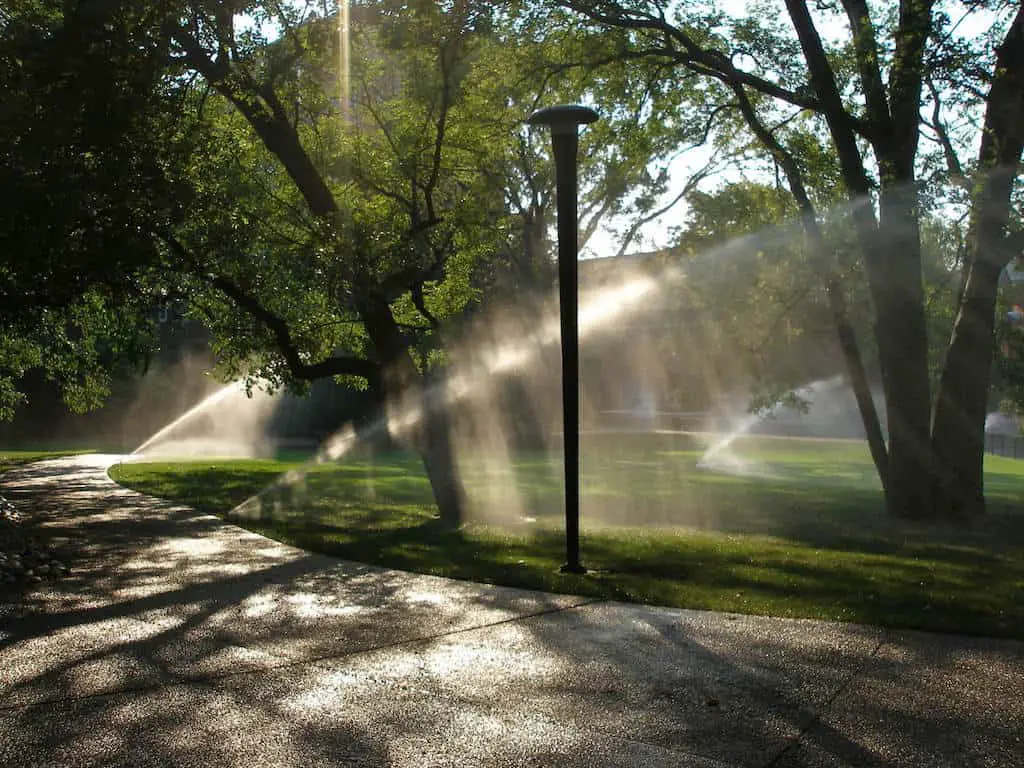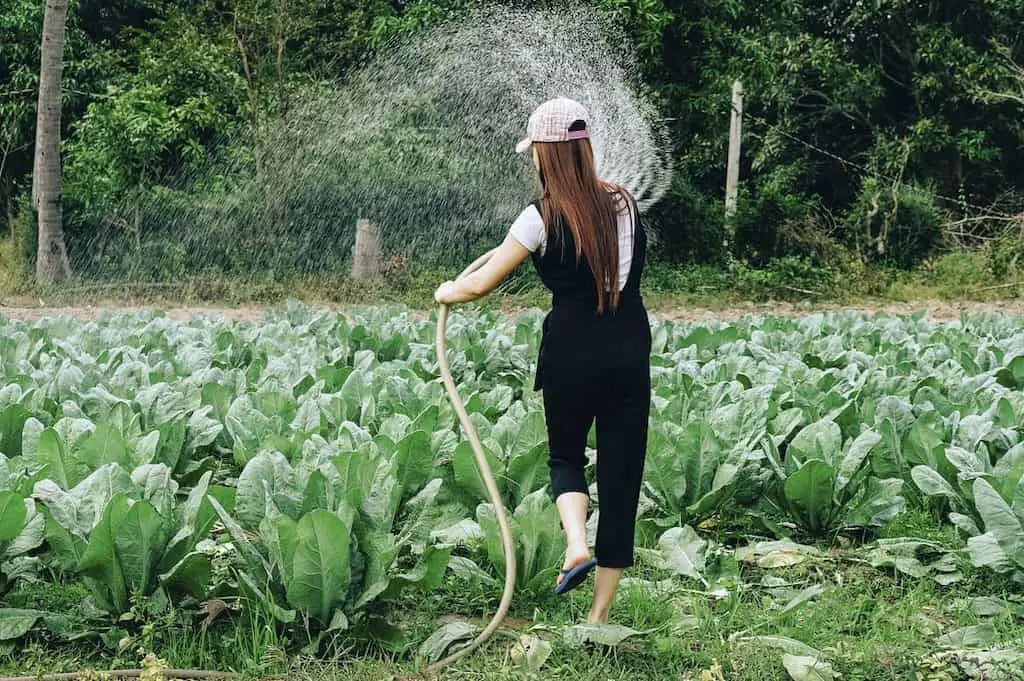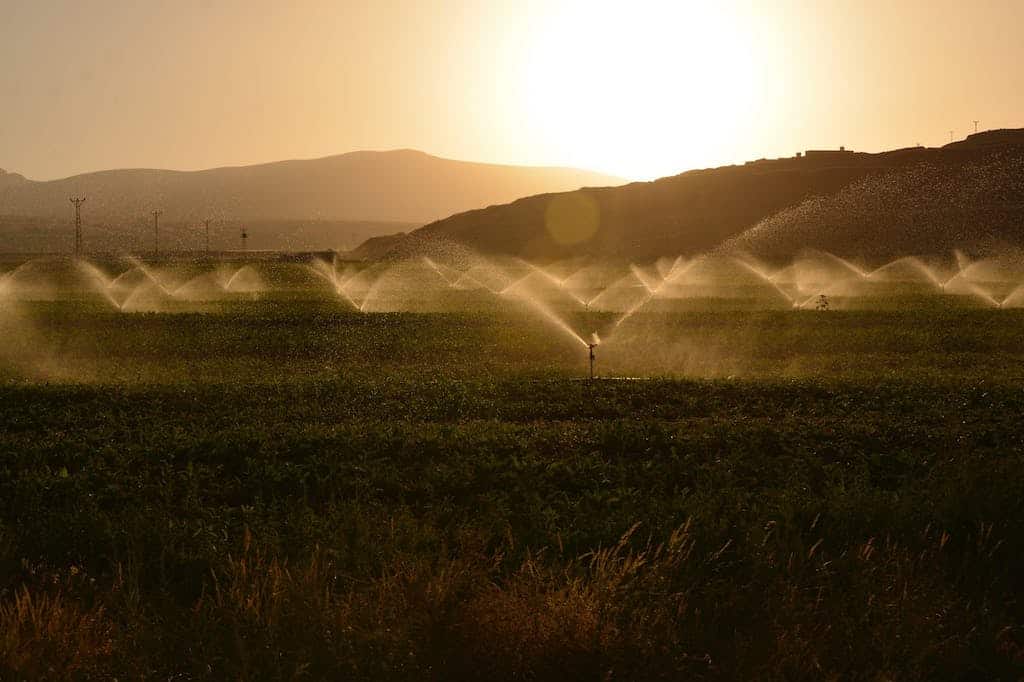Irrigation and landscaping, landscaping and irrigation. They seem to go hand in hand. Landscaping is a very important (and expensive) aspect of your home and yard, and your irrigation system can be as well. For what it’s worth, I’d put my money into the landscaping and not so much the irrigation.
The Typical System
Todays’ irrigation systems are a far cry from the old hose real and rainbow sprinkler that you may have used to water your lawn back in the day. We now have complex, computerized, wall-hung control panels that allow us to break down our yard into as many zones as we can dream up. On top of that, we have the option to create as many watering scenarios as we might like. We have water sensors so that the computer can tell when it rains and prevent the system from running, we can set the system to run only during certain hours, and we can pick which zone to run for how long on which days and at which time of the day. The systems typically consist of spray heads and drip irrigation. The spray heads are usually used for lawn and shrub areas, and the drip irrigation is generally reserved for your more delicate plantings and flower beds.

The Magic
These systems seem complicated on the face, and the professionals always set them up for you and inject plenty of fancy lingo when describing the system to ensure that there is a bit of magic and confusion around how they work. This way, you will call them back for a service call any time you need to adjust something. In reality, if you can operate your computer, log into the internet, browse web pages and collect your email, you are likely smart enough to read through a few pages of instructions and program your sprinkler controller. The heads and valving are pretty easy to adjust as long as you have a few specialized tools for whatever system you have. The system is water, piping, and electrically controlled valves that open and close. Don’t be scared, just read the book and ask lots of questions.
A Bit of Observation
Over the years, I have seen many clients spend a great deal of money on the latest and greatest irrigation systems. I’ve also seen penny pinchers create their own ad hoc irrigation system using hoses, pipes, and whatever sort of sprayers and nozzles they can find. And then I’ve seen many homeowners with really nice landscapes that don’t have any irrigation system at all. Nowadays, most owners of large homes and estates think that an irrigation system is necessary if you are going to have a nice yard and healthy plants.
Here’s The Story
It usually goes something like this. “Mr. Homeowner, I’m sure that you don’t want to spend your time moving sprinklers around, and you certainly don’t want all of these expensive landscape plants to die, do you?” Combining the threat of extra work and the idea that their plants might die usually gets them reaching into their wallets for thousands of dollars to spend on an irrigation system. At this point, they haven’t realized that the system that they are about to pay thousands of dollars for will also need adjusting and maintaining, so it will keep costing them for as long as they own the home.

A Different Story
The truth of the matter is that most landscapes don’t need an irrigation system. The need for an irrigation system in your landscape has mostly been a fabrication of the industry and an excellent way for contractors to squeeze a few more dollars out of a homeowner. Now don’t get me wrong, irrigation systems have their place. I can’t imagine a finely manicured golf course without an irrigation system. I can’t imagine growing much in the desert and many of the drier areas of the US without some irrigation. But each and every home in your average upscale subdivision? Come on now; I think that we all know that this is not necessary.
Some Exceptions
If you are an avid gardener and your passion is growing unusual and exotic plants that aren’t well suited for your climate, then an irrigation system broken down into many spray and drip irrigation zones will undoubtedly benefit some of your plants. If you are trying to create a lush green landscape where there would otherwise be dry dirt, sand, and cactus, then yes, you will need an irrigation system.
The Big But
But, if you own a home, large or small, with a landscape that is relatively well suited for your climate and you aren’t a plant expert that is going to be choosing rare and exotic plants, then you don’t need hundreds or thousands of feet of poly pipe and wire buried in your yard and a computer controller in your basement or garage. The truth is that most landscapes that have an irrigation system installed don’t need it.
Starting Out
The most useful few weeks of an irrigation system are the first few weeks after your lawn and garden have been installed. This is when you have hundreds if not thousands of plants that were just torn out of the ground and transplanted to your yard. You’ve got an acre of new lawn area that has just been painstakingly graded, raked, and seeded, and you are just praying that it isn’t too dry or too wet for all of these new plants to take hold and survive. This is when those of you who purchased the full irrigation system can sit back and relax, knowing that it is highly likely that most of your plants and lawn will survive because they are being watered automatically every single day. If you decided not to buy the irrigation system, this is when the irrigation contractor drives by and laughs as you drag out hoses and set sprinklers in your yard, trying to keep your grass and plantings alive.
The Tough Part
These first few weeks of no irrigation system is the tough part. If you didn’t buy the system, then you are the system. You are now in charge of monitoring the weather and ensuring that your yard gets the irrigation that it needs. You may get lucky, and it may drizzle every other day, and you have nothing to worry about. You may get unlucky, and it is scorching hot and very dry, which means you must irrigate everything, or some of your plants will die. Probably the best thing that you can do at this point is to head to your local hardware or big box store and buy a nice assortment of hoses, y-splitters, and a few varieties of sprinklers. This will cost you a few hundred bucks for sure, but it is stuff that you will use later in life also, and it will be a fraction of the cost of an irrigation system.

The Plan
Plan out your watering routine and get the hoses, splitters, and sprinklers set out in advance of needing them. Set it up so that the biggest sprinklers cover the biggest areas possible, and then work your way down to the smaller areas. You won’t be able to water everything at once, so use the splitters to set up as big of an area as your water pressure can handle. You will need to switch the splitters to activate one zone and then another to cover the entire yard. The most important areas will be the new grass seed, followed by the smallest of flowers and probably a few select large trees.
This is a Real Pain
You are correct if you think that this sounds like a pain in the ass. This will be irritating and not fun if mother nature doesn’t cooperate with you, but just think of the thousands of dollars and yearly costs down the road you are saving. A few weeks of work and attention now will save you a bundle in the future. The best-case scenario is that you have kids who can be put in charge of watering so that you just call them and tell them to water, and the job gets done. Heck, you could even hire a neighbor kid for a few weeks to do it for you and still be many thousands of dollars ahead.
The Truth
The truth of the matter is that once the newly installed grass and plants have a chance to grab hold, you won’t need an irrigation system. The grass is at its most delicate when it first germinates; those tiny little seeds start to sprout, and they are very easy to kill at this point. Once established, grass is tough to kill. Have you ever tried to eliminate it from a flower bed or your vegetable garden? It is the same thing with flowers, trees, and shrubs. When first installed, they are vulnerable. Once established, they do very well.
But, what about my Friend?
I know you are thinking about that friend of yours whose sprinkler quit for a few weeks, and his lawn went brown on him. That is quite true, it does happen, but there are a few things that you should know. The first thing to realize is that all plants tend to adapt to their environment. If your friend had an irrigation system that was watering every other day, keeping his lawn nice and irrigated at all times, his grass adapted to that and has grown very shallow roots. So, suddenly, the water stops coming every other day like clockwork, and the grass goes into shock because it wasn’t prepared. If that same lawn had been established without an irrigation system, the grass would have deeper roots and would have been ready for a bit of drought because it would have had to go through times like that before. The same goes for all of your plants. And by the way, even if his grass did brown out when his sprinkler system quit, I’ll bet that it came right back once the water came back. Grass is very resilient and will go dormant when too dry.

Make it Through
Once you make it through these first few weeks, it all gets easier. After these new plants get established, you should still keep an eye out for the first few months for extremely dry periods that may cause a plant with minimal roots to run short of water, but a wisely placed sprinkler now and then will take care of any of these con=cerns. Also, consider the biggest of the trees that you had planted. That small root mass needs to support all of the trunk and foliage above ground, so it is a great idea to let the hose run and soak them down now and then over the first few months just for added insurance.
That’s About It
That’s it. Now you are through the challenging part, and you can likely put all of your hoses away and only get them out when you plant some new flowers in spring or an occasional shrub or two. You don’t need to worry about programming timers, you don’t need to adjust anything, you don’t need to pay for fall shutdowns and spring start-ups, you don’t need to pay to repair the poly tubing when you decide to rent a lawn edger five years down the road, and you rip through a few shallow lines. And, you don’t need to worry about hitting a pipe or wire every time you decide you want to plant a shrub in your lawn. Life is much more simple, and you can use the extra money saved for a well-earned vacation once a year.
Irrigation Pros and Cons:
Pros:
- Irrigation keeps newly planted plants sufficiently watered.
- Irrigation can be set to water very specific areas in very specific ways if needed.
- Irrigation can be helpful if you plant things that aren’t well suited for your location.
- Irrigation can help keep ponds, birdbaths, and fountains topped off by automatically filling them.
- Irrigation can give you peace of mind knowing that your yard is getting watered regardless of what mother nature has in store.
Cons:
- Irrigation systems are costly.
- Irrigation systems need regular maintenance, which is also expensive.
- Irrigation systems are prone to damage from people and equipment working in the yard.
- Irrigation systems are largely unnecessary once your lawn and plants are established.
- Irrigation systems will need to be modified if your landscape beds change or if you add features such as patios, walkways, etc.
- Irrigation systems will freeze and be damaged if not properly shut down prior to freezing temperatures.
- Irrigation systems set your plants up to fail by not allowing them to set deep roots as nature intended.
- Irrigation systems promote the need for more fertilization since the fertilizers get washed out of the soils more rapidly.
- Irrigation systems waste vast amounts of water (not everyone in this world has unlimited water).
K. I. S. S. Keep it Simple Stupid
We are planting plants in dirt. Plants have been growing in soil on this earth long before humans arrived and will continue to grow here after we are gone. This isn’t some sort of voodoo. Plant plants that are well suited for your climate. Don’t let your landscaper talk you into exotic plants that may or may not grow here. Plant native plants, plant the stuff that wants to grow here. This will leave you with an easy to maintain and beautiful yard that is free from a bunch of unneeded mechanicals. It will also leave you with a bit more change in your pocket.

